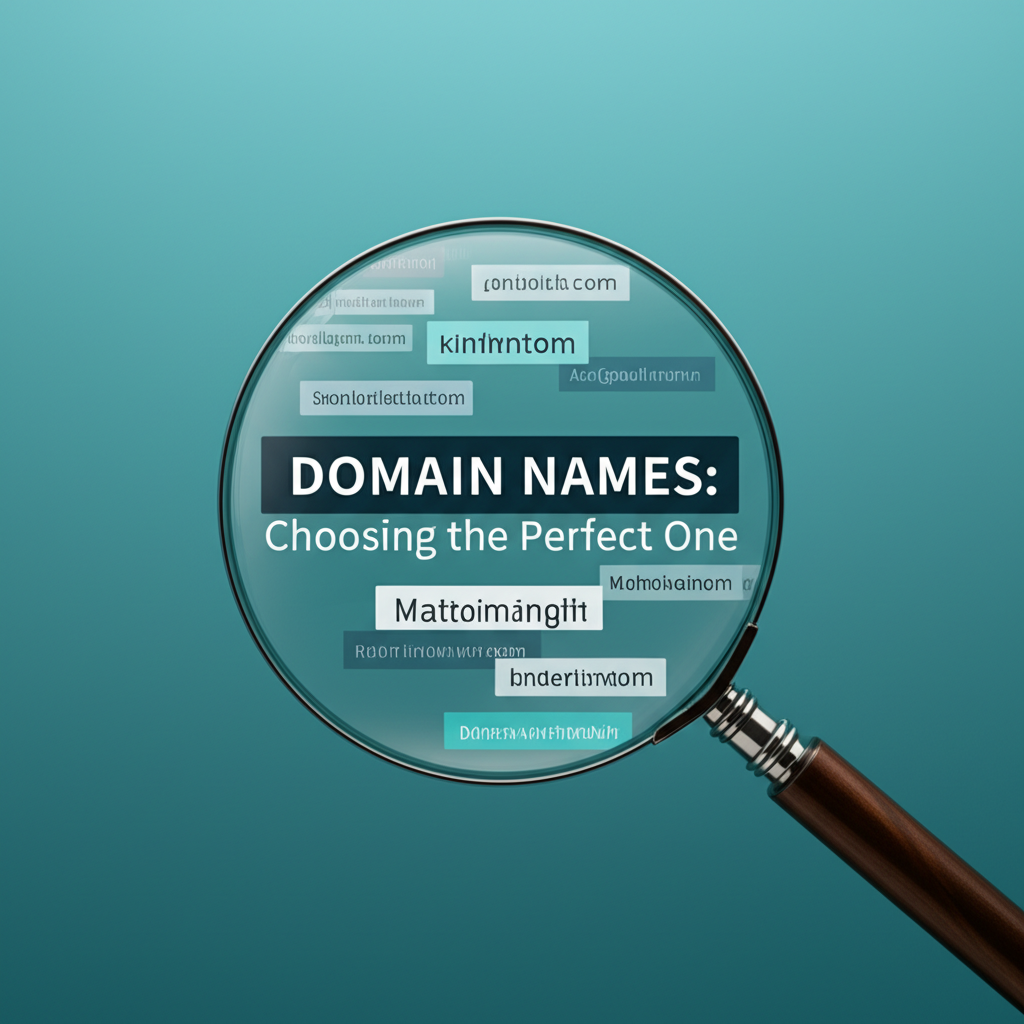- Key Considerations for Choosing Domain Names
- Relevance to Your Brand or Business
- Domain Name Length and Simplicity
- Keyword Inclusion (When Appropriate)
- Domain Name Extensions: Navigating the Options
- Effortlessly Finding Available Domain Names
- Brainstorming Alternatives and Using Domain Name Generators
- Securing Your Perfect Domain Name: Registration and Beyond
- Protecting Your Brand: Consider Registering Variations
- Post-Registration Essentials: Setting up DNS and Web Hosting
Domain Names: Choosing the Perfect One (Effortless Guide)
Domain names are the digital addresses of your website, the gateway through which users find and access your online presence. Choosing the right domain name is a crucial step in establishing a successful online venture, whether it’s a blog, an e-commerce store, or a corporate website. A well-chosen domain name can boost brand recognition, improve search engine optimization (SEO), and contribute to a positive user experience. This effortless guide will walk you through the key considerations and provide practical tips to help you select the perfect domain name for your needs.
Key Considerations for Choosing Domain Names

Selecting a domain name involves more than just picking a catchy phrase. Several factors contribute to a domain name’s effectiveness and long-term value. Let’s explore some of the most important considerations:
Relevance to Your Brand or Business
Your domain name should clearly reflect your brand, products, or services. It should give visitors a clear understanding of what your website is about. If you sell handmade jewelry, for example, a domain name like “craftedgems.com” would be more relevant than “bluemoon.com,” even if the latter sounds more poetic.
Domain Name Length and Simplicity
Shorter domain names are generally easier to remember and type, reducing the risk of typos and lost visitors. Aim for a concise and memorable domain name, ideally between 6 and 14 characters. Avoid using hyphens or numbers, as these can make the domain name more difficult to recall and share verbally.
Keyword Inclusion (When Appropriate)
While exact match domain names (EMDs) are no longer the SEO powerhouses they once were, including relevant keywords can still be beneficial. If you’re a photographer specializing in wedding photography, a domain name like “weddingphotographychicago.com” can signal both your service and location to search engines and potential clients. However, prioritize brandability and clarity over keyword stuffing.
Domain Name Extensions: Navigating the Options
The domain name extension, also known as the top-level domain (TLD), is the suffix that comes after the dot (e.g., .com, .org, .net). While .com remains the most popular and widely recognized TLD, other extensions can be equally effective, depending on your purpose. .org is often used by non-profit organizations, while .net is associated with network-related businesses. Newer TLDs like .photography or .shop can also be relevant for specific niches.
Effortlessly Finding Available Domain Names
Once you have a few potential domain names in mind, the next step is to check their availability. Numerous domain registrars offer tools to search for available domain names and purchase them. Some popular registrars include GoDaddy, Namecheap, and Google Domains. Be prepared to explore variations if your preferred domain name is already taken.
Brainstorming Alternatives and Using Domain Name Generators
If your desired domain name is unavailable, don’t despair. Try brainstorming related keywords, synonyms, or variations of your brand name. Domain name generators can also be helpful tools in this process. They can suggest alternative domain names based on your keywords and preferences.
Securing Your Perfect Domain Name: Registration and Beyond
After finding an available domain name that meets your criteria, register it immediately to prevent someone else from snatching it up. Most registrars offer various registration periods, typically ranging from one to ten years.
Protecting Your Brand: Consider Registering Variations
To safeguard your brand and prevent potential cybersquatting, consider registering variations of your domain name, including different TLDs and common misspellings. This can help protect your brand identity and prevent confusion among users.
Post-Registration Essentials: Setting up DNS and Web Hosting
After registering your domain name, you’ll need to configure its Domain Name System (DNS) records to connect it to your web hosting server. This process essentially tells the internet where to find your website when someone types your domain name into a browser. Your web hosting provider will provide you with the necessary DNS information.
Choosing the right domain name is a foundational step in building a successful online presence. By following this effortless guide, considering the key factors, and utilizing available tools, you can confidently select a domain name that represents your brand effectively and contributes to your online success. This careful consideration sets the stage for a memorable and discoverable online identity. Remember, your domain name is more than just a web address; it’s the doorway to your digital world. Choose wisely.















Leave a Reply